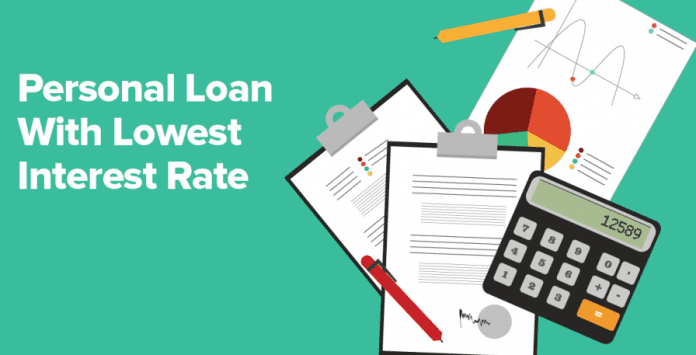If you need a personal loan, you can apply at a bank or a non-banking financial institution (NBFC). Several lenders offer the lowest rate personal loan with favourable terms. If you use a personal loan interest rate calculator, you can also effectively learn about different interest rates and loan amounts with the tenures you are considering.
Table of Contents
How to get the lowest rate personal loan?
If you want to apply for a personal loan, here are a few pointers to help you get the best interest rate:
- Improve your credit score: A high credit score shows that you are creditworthy. Banks and financial institutions provide the lowest personal loan rates to applicants with excellent credit. As a result, before applying for a personal loan, you should check your credit score. If your credit score is less than 750, you should work on improving it. If your credit score is above 750, you have a better chance of obtaining a low-interest personal loan.
- Avoid missed repayments: If you fail to make a loan or credit card payment, your credit score may suffer. Before determining personal loan interest rates, loan providers typically consider your repayment history. Those who have paid their EMIs and credit card bills on time in the past are more likely to be charged a lower interest rate.
- Watch out for offers: During the holidays, banks and financial institutions often offer special interest rates for a limited time. You may be offered a lower interest rate if you apply for a loan while such an offer is in effect.
- Compare interest rates: Before applying to a specific bank for a personal loan, compare the personal loan interest rates charged by various NBFCs and banks. This will enable you to obtain the lowest rate personal loan.
- Negotiate with the lender: If you are a bank’s current customer or have a good relationship with the loan provider, you can bargain for the lowest interest rate. It is best to submit a formal written request to the loan provider when doing so.
Doing your homework thoroughly is essential if you want to get the loan you want on terms that work for you. Following these ten fundamental rules can assist you.
- Determine the interest rate
The interest rate is probably the most important factor to consider when it comes to loans. You should always compare loan offers from different lenders and choose the one with the best interest rate.
- Choose your lender wisely
Personal loans are provided by banks, fintech organizations, and NBFC personal loans. Personal loan terms and conditions, on the other hand, may differ between these three. Typically, NBFCs and banks may offer you lower rates of interest and have some stringent personal loan eligibility criteria to fulfill.
- Keep a good CIBIL score
A CIBIL score measures your creditworthiness as a borrower. Lenders check your credit score before approving you for a personal loan. This is primarily due to the fact that personal loans are unsecured forms of credit. Credit scores range from 300 to 900, with a credit score of 750 considered acceptable.
- Consider the cons of ‘EMIs in advance’ carefully.
When you apply for a personal loan, some lenders may require you to make advance EMI payments. This may not be a good idea for you because it effectively raises the interest rate, and you will end up paying more in repayments than otherwise.
- Don’t delay repayments
If you want to keep your credit score high, you should pay your EMIs on time. If you have previously taken out a loan, you will be in good stead in terms of maintaining an acceptable credit score.
- Select loans with short repayment terms.
Personal loans with long repayment terms may promise low-interest rates, but you may end up repaying more in the long run.
- Use caution when submitting applications
Borrowers who make too many inquiries at once appear desperate for loans. As a result, you must exercise caution when submitting multiple loan applications to various lenders at the same time.
- Hidden fees
Loans have charges and fees that you may not be aware of when you take out the loan. Hidden fees and penalties for late payment, Personal Loan Processing Fees, and the like can add up quickly, and these can significantly increase what you originally agreed to pay.
- Understand foreclosure fees
Personal loans can be foreclosed at any time, but different lenders may charge a fee for doing so. Be aware of the foreclosure fees of the lender you choose.
- Be wary of schemes that offer 0% interest.
You may be presented with what appears to be an appealing loan offer with no EMI interest. Lenders can entice you with such offers by partnering with consumer durable retailers. What you might not expect are the high filing and processing fees that compensate for the 0% interest.
Summary
Although the bank/financial institution may have specified a high-interest rate, you can try to negotiate with the bank for the lowest interest rate personal loan. Many times, lenders will give a discount to existing customers and to those who have maintained a healthy relationship with them.
Read Also: Top 8 Aspects That Influence the Personal Loan Interest Rate










